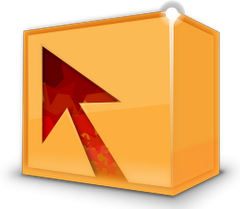KidsNews > Vol 2 Num 1 -- March 2005
The Origin of the Easter Egg
Of all the symbols associated with Easter, the egg, the symbol of fertility and new life, is the most identifiable. The customs and traditions of using eggs have been associated with Easter for centuries.
Originally, Easter eggs were painted with bright colors to represent the sunlight of spring and were used in Easter-egg rolling contests or given as gifts. Later, they were colored and etched with various designs. The eggs were exchanged by lovers and romantic admirers, much the same as valentines. In medieval times eggs were traditionally given at Easter to the servants. In Germany eggs were given to children, along with other Easter gifts.
Different cultures have developed their own ways of decorating Easter eggs. Crimson eggs, to honor the blood of Christ, are exchanged in Greece. In parts of Germany and Austria, green eggs are used on Maundy Thursday (Holy Thursday). Slavic peoples decorate their eggs in special patterns of gold and silver.
Austrian artists design patterns by fastening ferns and tiny plants around the eggs, which are then boiled. The plants are then removed revealing a striking white pattern. The Poles and Ukrainians decorate eggs with simple designs and colors. A number of eggs are made in the distinctive manner called pysanki (to design, to write). Pysanki eggs are a masterpiece of skill and workmanship. Melted beeswax is applied to the fresh white egg. It is then dipped in successive baths of dye. After each dip, wax is painted over the area where the preceding color is to remain. Eventually a complex pattern of lines and colors emerges into a work of art.
In Germany and other countries, eggs used for cooking were not broken, but the contents were removed by piercing the end of each egg with a needle and blowing the contents into a bowl. The hollow eggs were then dyed, and hung from shrubs and trees during the Easter Week. The Armenians would decorate hollow eggs with pictures of Christ, the Virgin Mary, and other religious designs.
>From www.holidays.net/easter/eggs.htm
Favorite Web Sites
Free online games: www.playfreeonlinegames.co.uk
History: www.hyperhistory.com/online_n2/History_n2/a.html
To be continued...
Pet Corner
Bella-- dog
Age: 1
Eye color: Brown
Hair: Long, wavy, white-and-black
Personality: Playful
Loves to: Play, and look out the window
The Big Escape -- by Elizabeth, Owner
Bella loves to play in our yard, running back and forth until she’s exhausted. Well, one day she found an opening in the backyard and ran out. Mom and I were trying to catch her, but she was having way too much fun, free at last! Finally, I said the magic words: “You want a little something?” Bella stopped in her tracks and ran right to the door.
Thank goodness for treats!
What is KidsNews?
KidsNews is a free newsletter that I publish for my community. This post is here for the members the community to view.
Of all the symbols associated with Easter, the egg, the symbol of fertility and new life, is the most identifiable. The customs and traditions of using eggs have been associated with Easter for centuries.
Originally, Easter eggs were painted with bright colors to represent the sunlight of spring and were used in Easter-egg rolling contests or given as gifts. Later, they were colored and etched with various designs. The eggs were exchanged by lovers and romantic admirers, much the same as valentines. In medieval times eggs were traditionally given at Easter to the servants. In Germany eggs were given to children, along with other Easter gifts.
Different cultures have developed their own ways of decorating Easter eggs. Crimson eggs, to honor the blood of Christ, are exchanged in Greece. In parts of Germany and Austria, green eggs are used on Maundy Thursday (Holy Thursday). Slavic peoples decorate their eggs in special patterns of gold and silver.
Austrian artists design patterns by fastening ferns and tiny plants around the eggs, which are then boiled. The plants are then removed revealing a striking white pattern. The Poles and Ukrainians decorate eggs with simple designs and colors. A number of eggs are made in the distinctive manner called pysanki (to design, to write). Pysanki eggs are a masterpiece of skill and workmanship. Melted beeswax is applied to the fresh white egg. It is then dipped in successive baths of dye. After each dip, wax is painted over the area where the preceding color is to remain. Eventually a complex pattern of lines and colors emerges into a work of art.
In Germany and other countries, eggs used for cooking were not broken, but the contents were removed by piercing the end of each egg with a needle and blowing the contents into a bowl. The hollow eggs were then dyed, and hung from shrubs and trees during the Easter Week. The Armenians would decorate hollow eggs with pictures of Christ, the Virgin Mary, and other religious designs.
>From www.holidays.net/easter/eggs.htm
Favorite Web Sites
Free online games: www.playfreeonlinegames.co.uk
History: www.hyperhistory.com/online_n2/History_n2/a.html
To be continued...
Pet Corner
Bella-- dog
Age: 1
Eye color: Brown
Hair: Long, wavy, white-and-black
Personality: Playful
Loves to: Play, and look out the window
The Big Escape -- by Elizabeth, Owner
Bella loves to play in our yard, running back and forth until she’s exhausted. Well, one day she found an opening in the backyard and ran out. Mom and I were trying to catch her, but she was having way too much fun, free at last! Finally, I said the magic words: “You want a little something?” Bella stopped in her tracks and ran right to the door.
Thank goodness for treats!
What is KidsNews?
KidsNews is a free newsletter that I publish for my community. This post is here for the members the community to view.




No comments:
Post a Comment